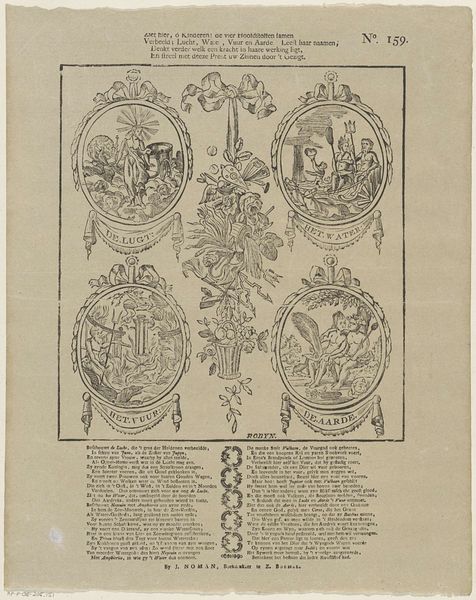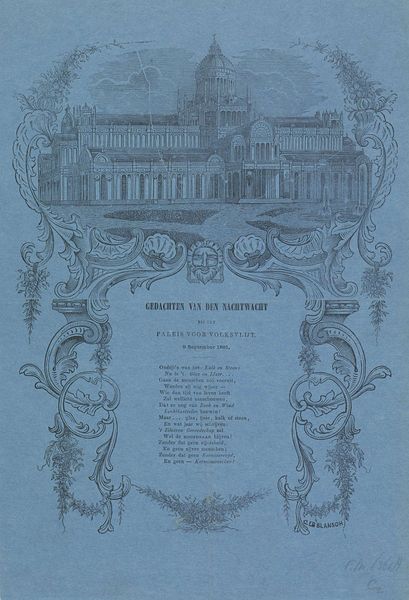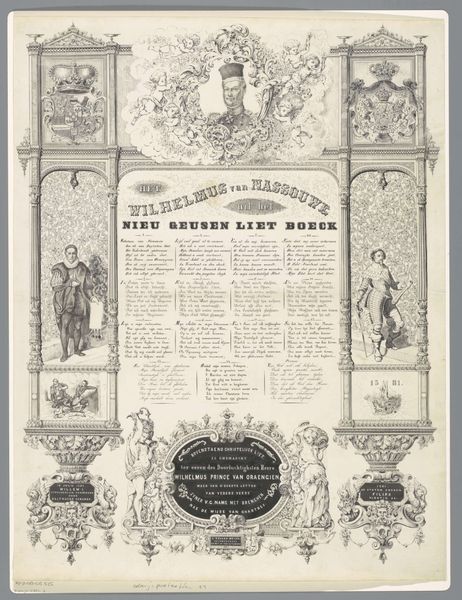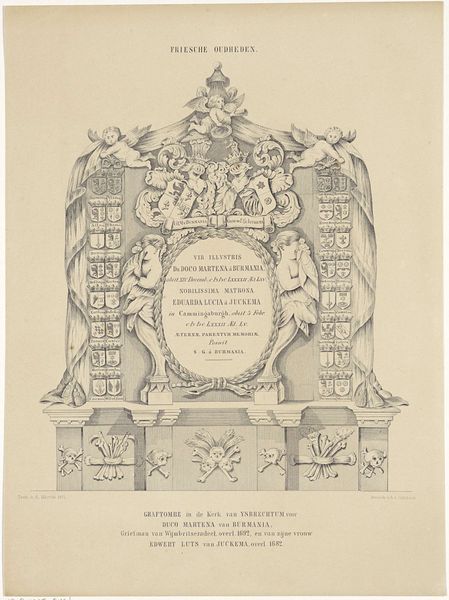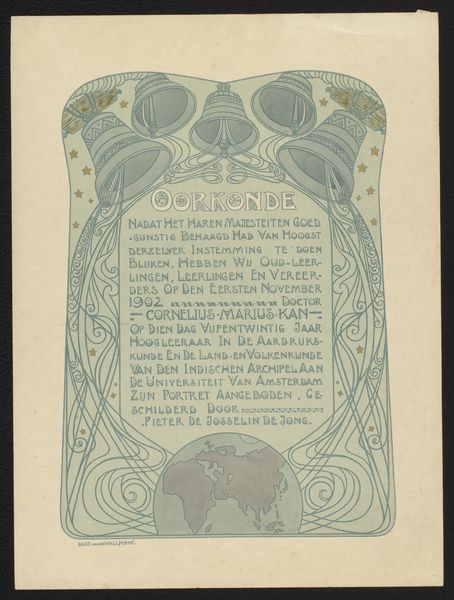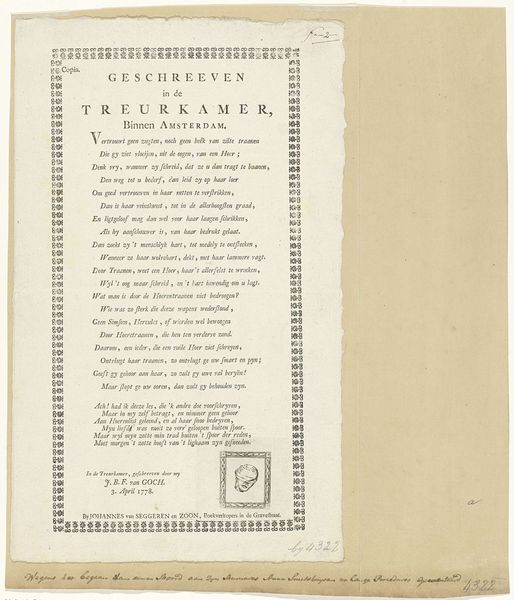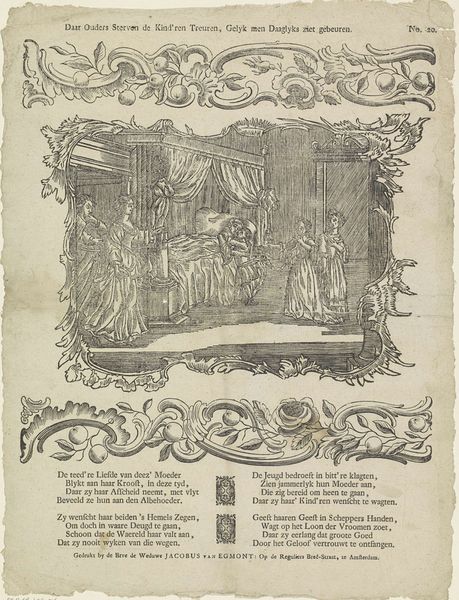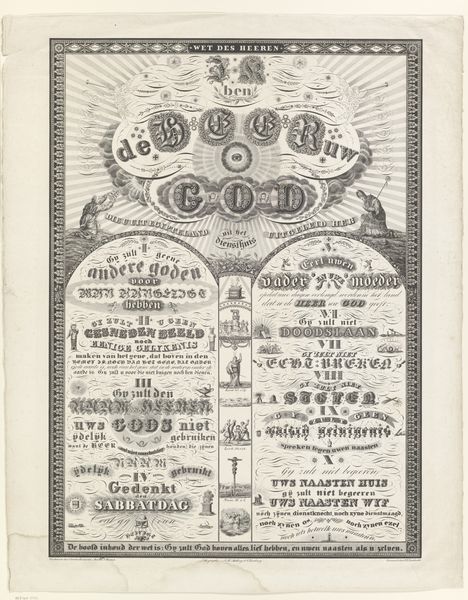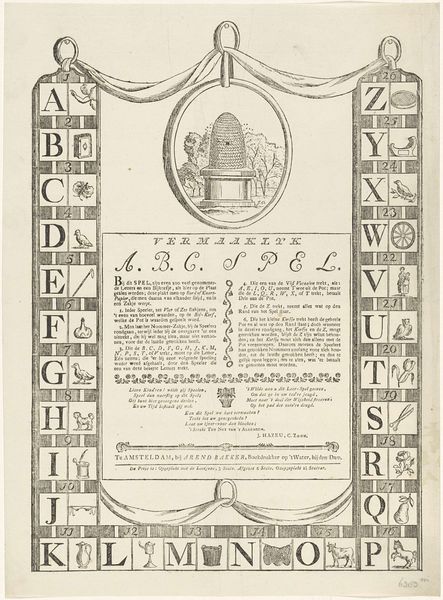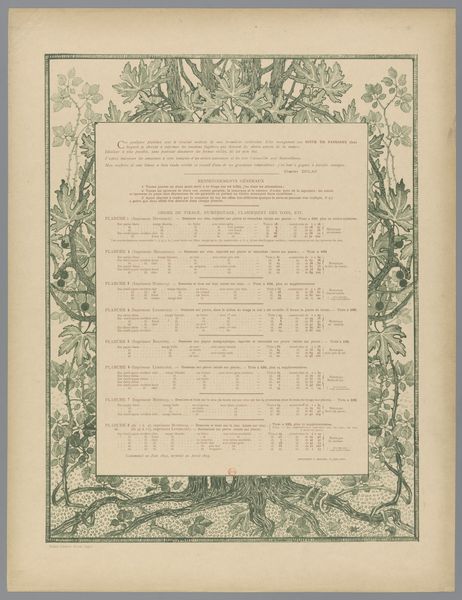
Kermisprent van de Amsterdamse nachtwacht voor het jaar 1847 1847
0:00
0:00
graphic-art, print, paper, ink, engraving
#
graphic-art
#
pen drawing
#
dutch-golden-age
# print
#
landscape
#
paper
#
ink
#
cityscape
#
engraving
Dimensions: height 340 mm, width 222 mm
Copyright: Rijks Museum: Open Domain
Curator: So, here we have "Kermisprent van de Amsterdamse nachtwacht voor het jaar 1847," or a "Carnival Print of the Amsterdam Night Watch for the Year 1847," dating, rather unsurprisingly, from 1847. Dirk Wijbrand Tollenaar is the artist. It's currently residing here at the Rijksmuseum. It appears to be a detailed engraving with pen and ink on paper. Quite the mouthful, isn’t it? Editor: My first impression? Ornate. Like someone decorated a very important historical document with party streamers. The borders are teeming with miniature cityscapes, coats of arms, even what looks like a carved theatrical mask dangling at the bottom. It gives me a sense of controlled exuberance, a real material contrast between civic duty and festive release. Curator: Absolutely, a visual representation of a very Dutch balancing act. It commemorates the annual fair, the "Kermis," but within a framework steeped in civic symbolism. Those little cityscapes depict familiar Amsterdam landmarks, anchoring the revelry in the familiar cityscape. What a playful way to weave daily life and the imagined, into an inked record. Editor: And look closely at the verses in the middle—it’s actually a poem celebrating the Night Watch, those vigilant guardians, enjoying a bit of generosity during the carnival. The artist is subtly commenting on the working class’s relationship to both city authority and leisure. Where was the piece originally created? Curator: As a printed work, it's possible it was made anywhere around the city of Amsterdam as it was a mass produced art. These "kermisprenten," these prints made for the fair, served as both souvenirs and a kind of communal announcement, marking the temporal and physical space of the festivities, to the regular worker. They become artworks in themselves and the people who crafted the materials—paper, ink, engraving, etc.—to create such items are essential too. What a delightful method! Editor: So it's about time, but also tangible craft... that's what really grabs me here. The print uses its material presence to define, represent, and ultimately perpetuate both a historical and a cultural moment for its local citizens. We tend to neglect the value, however, and effort that went into printing things at this point. Curator: Yes, this piece isn't merely about the past. It embodies a conversation—between labor, authority, festivity, art, history and a present-day observer such as myself! That interplay keeps it fresh. Editor: Right, this old "Kermisprent" contains its own quiet riot of ideas. A great find!
Comments
No comments
Be the first to comment and join the conversation on the ultimate creative platform.
